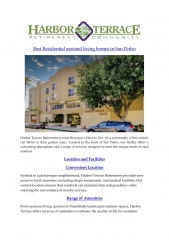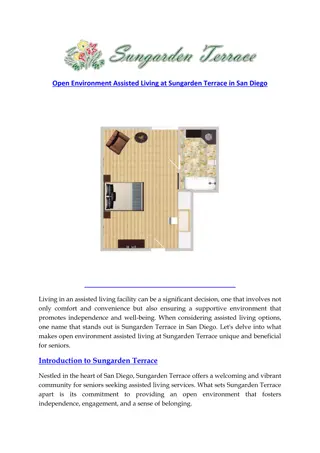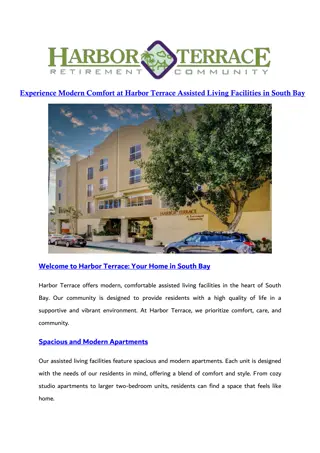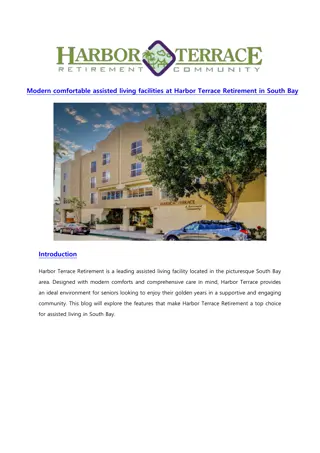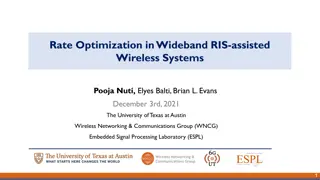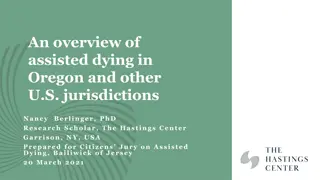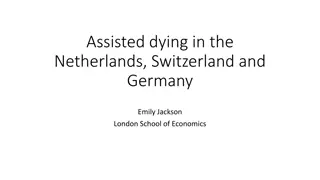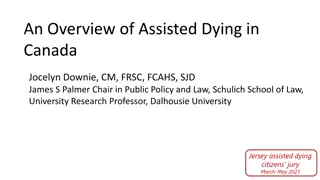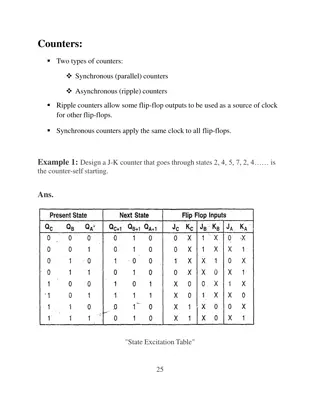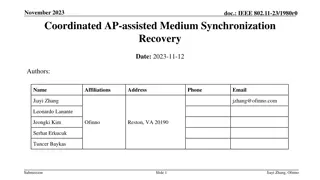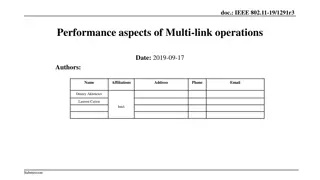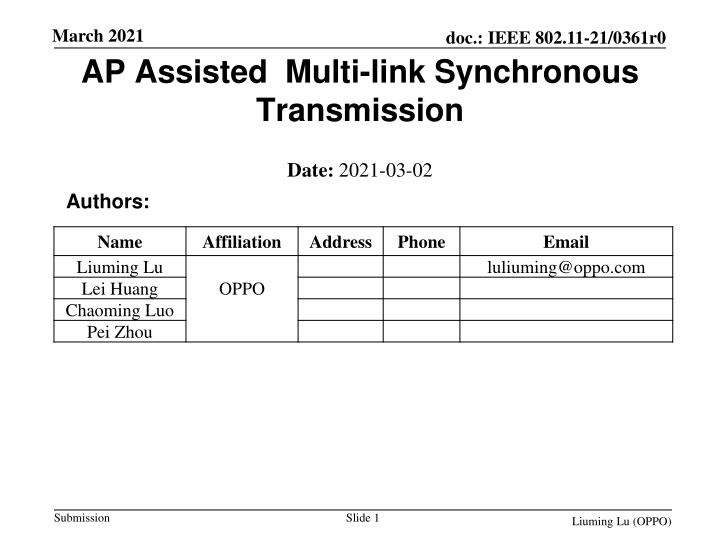
Implementing AP Assisted Multi-Link Synchronous Transmission
Learn about the mechanism for AP assisted multi-link synchronous transmission aiming to enhance efficiency and save TXOP for frame exchange. Explore the channel access procedures and behaviors in implementing multi-link synchronous transmission in IEEE 802.11 standards.
Download Presentation

Please find below an Image/Link to download the presentation.
The content on the website is provided AS IS for your information and personal use only. It may not be sold, licensed, or shared on other websites without obtaining consent from the author. If you encounter any issues during the download, it is possible that the publisher has removed the file from their server.
You are allowed to download the files provided on this website for personal or commercial use, subject to the condition that they are used lawfully. All files are the property of their respective owners.
The content on the website is provided AS IS for your information and personal use only. It may not be sold, licensed, or shared on other websites without obtaining consent from the author.
E N D
Presentation Transcript
March 2021 AP Assisted Multi-link Synchronous Transmission doc.: IEEE 802.11-21/0361r0 Date: 2021-03-02 Authors: Name Liuming Lu Lei Huang Chaoming Luo Pei Zhou Affiliation Address Phone Email luliuming@oppo.com OPPO Submission Slide 1 Liuming Lu (OPPO)
March 2021 doc.: IEEE 802.11-21/0361r0 Introduction For non-STR non-AP MLD to make the two STAs affiliated with the MLD finish their backoff procedures together and then transmit simultaneously would result in low efficiency to implement multi-link synchronous transmission in some scenarios. This contribution introduces a mechanism for AP assisted multi-link synchronous transmission, which can save the TXOP for frame exchange and increase the efficiency of synchronous transmission. Submission Slide 2 Liuming Lu (OPPO)
March 2021 doc.: IEEE 802.11-21/0361r0 Discussion Non-STR MLD Channel Access for Multi-link Synchronous Transmission According to the Non-STR MLD channel access procedure, the following behaviors may implement multi- link synchronous transmission. When the backoff counter of the STA affiliated with the MLD reaches zero it cannot transmit and keep its backoff counter at zero if the following condition happens: the backoff counter of another STA of the affiliated MLD has not reached zero on a slot boundary of the link that the other STA operates. The STA initiates transmission on a link when the medium is idle and the following condition is met: The backoff counter of the STA is already zero, and the backoff counter of another STA of the affiliated MLD reaches zero on a slot boundary of the link that the other STA operates. Non-STR Non-AP MLD BUSY 4 3 9 8 7 6 5 Backoff AP MLD SIFS A-MPDU 2 1 0 AP2 STA2 Link2 BA Backoff SIFS BUSY A-MPDU 2 1 0 0 0 0 0 0 0 0 STA1 AP1 Link1 BA Submission Slide 3 Liuming Lu (OPPO)
March 2021 doc.: IEEE 802.11-21/0361r0 Discussion According to the Non-STR MLD channel access procedure for Multi-link synchronous transmission when the backoff counter of one STA (STA1) in the MLD reaches zero but another STA (STA2) needs more time for backoff, STA1 cannot transmit MPDU and keep its backoff counter at zero. This would lead to the following result: The channel access opportunity is preempted by another STA(STA3) in the same link with STA1, therefore STA1 would lost its transmission opportunity. Multi-link synchronous transmission cannot been implemented Non-STR Non-AP MLD Backoff AP MLD BUSY BUSY 4 3 2 1 0 9 8 7 6 5 AP2 STA2 Link2 Backoff BUSY BUSY 2 1 0 0 0 STA1 AP1 Link1 SIFS A-MPDU 4 3 2 1 0 STA3 Link1 BA Submission Slide 4 Liuming Lu (OPPO)
March 2021 doc.: IEEE 802.11-21/0361r0 Discussion For non-STR non-AP MLD to make the two STAs affiliated with the MLD finish their backoff procedure together and then transmit simultaneously is not a suitable method in some scenarios to implement multi-link synchronous transmission. If one STA (STA1) affiliated with the non-STR non-AP MLD firstly finish its backoff procedure and gains transmission opportunity but the backoff counter of the other STA(STA2 in Link 2) affiliated with the MLD doesn t reach ZERO, the following behaviors can be considered except that STA1 in Link1 keeps its backoff counter at zero and wait for the completement of STA2 s backoff procedure : STA1 can request AP-MLD to help listen to the medium status of Link2 If AP2 affiliated with AP MLD gains the TXOP in Link2 , it can choose to share the TXOP with STA2. Non-AP MLD can use the TXOP in Link1 gained by STA1 itself and the TXOP in Link2 shared by AP2 to implement multi-link synchronous transmission. Submission Slide 5 Liuming Lu (OPPO)
March 2021 doc.: IEEE 802.11-21/0361r0 Solution AP Assisted Multi-link Synchronous Transmission Assuming Non-STR Non-AP MLD needs to implement multi-link synchronous transmission on Link1 and Link2, the procedure is showed as follows: 1. STA1 executes the backoff procedure and firstly gains transmission opportunity but STA2 needs more time to finish its backoff procedure. 2. STA1 sends an PPDU which carries the required indication to request the AP MLD to help its intention for the synchronous transmission with STA2 in Link2 . 3. When AP MLD knows the non-AP MLD needs to do synchronous transmission in Link1 and link2 , AP2 can share its TXOP with STA2 of the non-AP MLD by sending MU-RTS TXOP Sharing TF to STA2 when AP-MLD gains the transmission opportunity in Link2. 4. Non-AP MLD uses the TXOP in Link1 gained by STA1 itself and the TXOP in Link2 shared by AP2 to implement multi-link synchronous transmission . Carries the required indication for AP assisted synchronous transmission including Link2 ID MU-RTS TXOP Sharing TF Submission Slide 6 Liuming Lu (OPPO)
March 2021 doc.: IEEE 802.11-21/0361r0 Solution AP assistant function for UL synchronous transmission includes : 1) listening to the given link(s) and gains the TXOP s on the link(s); 2) sharing the time duration from the TXOP s with the corresponding STA(s) of the non-AP MLD on the link(s). Note: the AP assistant function is different from the function introduced in the contribution (20/0613r6, AP assisted Non-STR behavior ), which proposes the AP in MLD assists the STA in Non-STR MLD to handle blindness issue. Submission Slide 7 Liuming Lu (OPPO)
March 2021 doc.: IEEE 802.11-21/0361r0 Solution Pros: This solution can prevent the channel access opportunity gained by one STA of the non-STR non-AP MLD from being preempted by another STA in the same link with the STA and losing its TXOP when waiting for the completement of the backoff procedure of another STA affiliated with the same MLD. This solution can reduce the possibility of the occurrence of the case that one STA of the non-STR non-AP MLD cannot gain the transmission opportunity if another STA of the MLD firstly transmits and thus impacts its backoff procedure. Cons: This solution would cause some overhead for the frame exchange required for the indication information delivery and the PPDU alignment across the non-STR links. Submission Slide 8 Liuming Lu (OPPO)
March 2021 doc.: IEEE 802.11-21/0361r0 Proposal The AP assisted multi-link synchronous transmission, which uses the overlapping time duration of the TXOP in one link gained by one STA of the non-STR non-AP MLD itself and the TXOP in another Link shared by the AP MLD with another STA of the non-AP MLD for UL synchronous transmission, can be considered to be an optional mechanism of multi-link synchronous transmission for non-STR non-AP MLD. The required indication, which is used by the non-STR non-AP MLD to request the AP MLD to execute AP assistant function for the given link(s), needs to be specified. The required indication can be carried in a TBD frame or a TBD field of some frame. Submission Slide 9 Liuming Lu (OPPO)
March 2021 doc.: IEEE 802.11-21/0361r0 Summary This contribution introduces a mechanism for AP assisted multi-link synchronous transmission, which would help to increase the efficiency of synchronous transmission in some scenarios. Submission Slide 10 Liuming Lu (OPPO)
March 2021 doc.: IEEE 802.11-21/0361r0 SP 1 Do you agree that further investigation on the mechanism of AP assisted synchronous transmission for non-STR non- AP MLD should be considered? The mechanism uses the overlapping time duration of the TXOP in one link gained by one STA of the non- STR non-AP MLD itself and the TXOP in another Link shared by the AP MLD with another STA of the non-AP MLD for UL synchronous transmission. Submission Slide 11 Liuming Lu (OPPO)
March 2021 doc.: IEEE 802.11-21/0361r0 Reference [1] 11-20-1935-19-00be-compendium-of-straw-polls-and- potential-changes-to-the-specification-framework-document- part-2 [2] 11-20-1730-03-00be-ul-sync-channel-access-procedure [3] 11-20-0613-06-00be-ap-assisted-non-str-behavior [4] 11-21-0087-05-00be-pdt-mac-triggered-su Submission Slide 12 Liuming Lu (OPPO)

